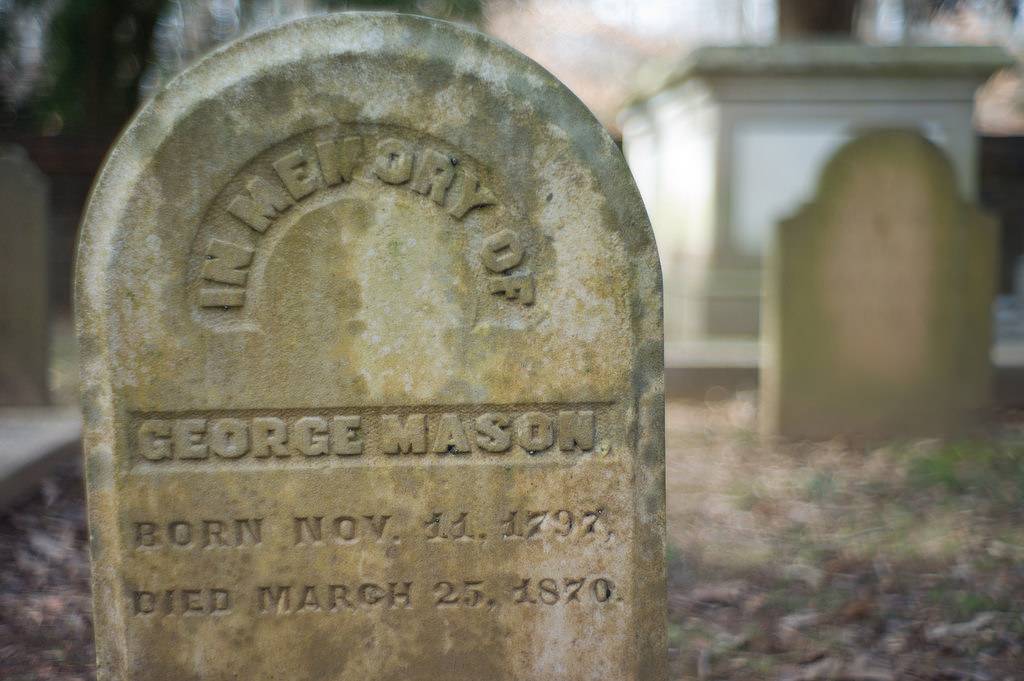Expert Advice: Brian Sweeney's First Impressions of the New Jupiter 3+
10 11 Share TweetWhere do you go for the most extensive advice on the New Jupiter 3+? To the Jupiter master of course! Engineer and rangefinder enthusiast Brian Sweeney is well known as an expert on the Jupiter 3 and vintage Zeiss Sonnars, and we had the chance to speak with him about his experience with our newest art lens.
Upon hearing our announcement of the New Jupiter 3+, Brian ordered the newest addition to the Lomography Art Lens Family and has been using it alongside Jupiter 3 lenses going from the 1950's as well as custom-converted Zeiss Sonnars going back to 1934. So what does he think? "So in the 21st century, we don't have flying cars--but you can buy a brand new Jupiter 3 that is better than ever. I'm calling it even." He also gave a full review.
h3. BRIAN SWEENEY'S PHOTOGRAPHIC PRACTICE
I’m a rangefinder enthusiast, have been using them since eleven years old in 1969. I am an engineer and worked with some of the earliest digital imaging sensors back in the 1980s. Photography is my outlet; working on rangefinder cameras and lenses is a counterbalance. Rangefinder cameras allow a degree of freedom to an optical engineer that is not available with SLR’s. The lens can sit close to the image plane and does not have to accommodate a mirror. Digital sensors also make life difficult for optical engineers, but for a different reason. Digital sensors require that light fall directly on the surface to be efficiently collected. Leica engineers solved this problem by designing sensors that used special microlenses and thin filter stacks to use generations of lenses designed for film. I use a Leica M9 and M Monochrom for most of my digital photography, and a Nikon SP and Leica M3 for film.
A couple of years ago I wanted to know: What makes a lens a *SONNAR* formula lens? I took quite a few lenses apart, separated into front and back sections and made approximate measurements of their focal lengths. The front element is a positive, the middle group is negative. Together the front section is a Telephoto lens with a focal length about 2.5x the focal length of the completed lens. The Rear group forms an image, has a focal length about the same as the completed lens. The front and rear sections are brought together using the lens maker's formula--the asymmetry means they are closely spaced compared to a double Gauss. This configuration gives the Sonnar its compact attribute and optical properties. Technically, the Sonnar formula “suffers” from spherical aberration, coma, and field curvature. In practice, these imperfections produce a unique and pleasing signature.

JUPITER HISTORY
I’m a long-time user of Nikon and Contax rangefinders. It is well known that lenses for these two mechanically-compatible mounts cannot be interchanged because Nikon built their lenses to the 51.6mm standard and Zeiss built their lenses to a 52.4mm standard. This means a Zeiss lens will back-focus on a Nikon camera. I preferred the rendering of the Zeiss Sonnar over the more harsh Nikkor lenses, but preferred the life-size viewfinder of the Nikon camera. To use Zeiss lenses, I adjusted the Nikon camera by having a thicker shim for the lens mount and adjusting the rangefinder. Then I bought a Leica M3, and had to have a Leica mount lens that rendered like my Zeiss Sonnars. The well-known Nikkor 5cm f 1.4 has harsh Bokeh compared to the Zeiss lens. The Canon 50/1.5 is relatively uncommon--many suffer from etched glass from oil getting on the surfaces, and they are optimized for f 2.8. Finding an original Zeiss Sonnar in Leica mount is not easy, and they are expensive. The mounts themselves are fragile.
I learned about the Jupiter 3 around 2002, at that time its reputation was poor among Leica users. Dante Stella wrote an article stating that the Jupiter lenses were made to the Zeiss standard, and that put every report of “poor performance” on a Leica in perspective. I bought five Jupiter 3 lenses off of Ebay and adjusted them for the Leica as I had adjusted the Nikon S2 to use Zeiss lenses. I kept one, sold the others to members of the Rangefinderforum. They started posting images taken with Jupiter 3’s, and I started getting requests to adjust others. I’ve written and posted guides for adjusting the Jupiter 3 for the Leica, and have been sent more than 200 lenses from around the world. I’ve also converted about 50 Zeiss Sonnars to Leica mount using Jupiter focus mounts, mostly from J-3’s and J-8’s with damaged glass. I’ve “Cherry-Picked” the best-of-the-best Jupiter 3’s and Zeiss Sonnars over the years for my own collection. I’ve seen a couple of my converted Sonnars being resold for more than the New Jupiter 3+.
FIRST IMPRESSIONS OF THE NEW JUPITER 3+
This is the best Jupiter 3 that I’ve ever seen. Focus is perfect on my Leica M9 across the full distance range. This means the New Jupiter 3+ is built precisely to the Leica focal length standard and the tolerance for the shim is tighter than 0.01mm. Choice of material, chrome over brass, is better than the vintage Leica mount Jupiter and Zeiss lenses. The focus mount now allows 0.7m minimum focal distance. Focus movement is smooth, even, and without play in the mechanism. The build quality is as good as the vintage Nikkor lenses.
_"This is a case of 'They don’t make them like they used to; they make them better than they used to.'"
NEW JUPITER 3+: THE EXPERIENCE
A lot of people want to know how this new lens compares with vintage lenses and with the Zeiss C-Sonnar. The first lens that I compared the New Jupiter 3+ with was my 1950 KMZ Jupiter 3 with Zeiss glass:
bq. This lens is the only 1-3-3 50mm f 1.5 Sonnar produced in the 21st century. It is also the Best Jupiter 3 that I've ever seen, or made. I just proved that point to myself, tested against my very best Jupiter 3 created using Zeiss glass optics, a Jupiter 3 barrel with the spacing set for the Leica standard, all in a buttery-smooth KMZ Focus mount modified to focus to 0.75m. I have about 40 hours of time invested into that lens. Getting the spacing between the two triplets to focus across the full range took a lot of trial and error. - Leicaplace.com
ABOUT YOUR NEW JUPITER 3+ PHOTOS
Of all of my Sonnar formula lenses, the 1934 Carl Zeiss Jena 5cm f 1.5 adapted to Leica mount is my favorite; it “just renders better”. This lens is one of the oldest Sonnars ever used on a Leica. I took this lens, the New Jupiter 3+, and my perfect-glass 1956 KMZ Jupiter 3 to Gunston Hall, home of George Mason. The best Jupiter 3’s were manufactured by KMZ in Krasnorgorsk, and this 1956 lens is one of their last. The New Jupiter 3+ renders like the Sonnar, has less vignetting due to use of modern coatings. The 1956 lens yields a warmer image than the Sonnar or New Jupiter 3+ due to its single-coated optics. Use a Skylight 1a with the New Jupiter 3+ if you want a warmer image.
I did a number of tripod-mounted comparisons between the three lenses. Find more pictures uploaded to my Flickr account and at Leica Place.
FAVOURITE FEATURE OF THE NEW JUPITER 3+
The close-focus of 0.7m is a major advantage over the vintage lenses. Having this feature on a Leica Thread Mount lens is very uncommon. The vintage Nikkor and Tanack lenses had this feature, but rangefinder coupling dropped out at 0.9m. This feature is primarily for users of M-Mount and mirrorless cameras, but I’ve found the Canon P (LTM film camera) also gets below the 0.9m traditional limit.

PERFECT SUBJECT/LOCATION FOR THE NEW JUPITER 3+
The New Jupiter 3+ at f 4 is sharp enough and well controlled for aberrations to be used just like any normal lens around. The compact size makes it perfect for smaller cameras. Wide-open, it separates the subject from backgrounds in a fashion that only a Sonnar can do. Some will pick it up just for portraits, but here's my suggestion: Just leave it on the camera and explore the differences.
ADVICE FOR FIRST-TIME USERS
The New Jupiter 3+ and all Sonnar formula lenses produce a shift in focus when the aperture is stopped down, and when color contrast filters are used. These issues only affect users of rangefinder cameras. Stopping the lens causes the focus to shift behind what the rangefinder indicates. This is not a problem with a mirrorless camera as you are focusing through the lens. For black and white film photographers and the Leica M Monochrom, using a deep-yellow, orange, and red filter will cause the focus to shift behind what is indicated by the rangefinder. The easiest method to compensate: Focus with the rangefinder and then “nudge” the focus slightly closer. This will take a little practice; we are talking ~3cm at 1m difference.
FUTURE PROJECTS
I would like to see a Lomography Jupiter 9+ introduced; the 85mm F2 Sonnar formula lens. Again, the original Jupiter 9 is made to the Zeiss standard, and is almost impossible to adjust to work across the full focal range on a Leica. The rendering is beautiful.

For my next project, I have a 1945 Zeiss Sonnar 5cm F1.5 that someone just sent to me--focus is off by 1.5m at 5m, and it’s stuck together. Nothing that popping the glass and immersing the fixture in alcohol for a few days won’t solve…
"I would like to congratulate the New Jupiter 3+ team on this lens. They have brought Ludwig Bertele’s masterpiece design to the 21st century, and have faithfully implemented it in a form that is a pleasure to use. Thank you."
Thank you, Brian, for speaking with us about the New Jupiter 3+ Art Lens. Head over to Brian Sweeney's Flickr page to see more of his photographs!
written by azinteimoori on 2016-02-13 #people #interview #lomoamigo #jupiter-3 #first-impressions #brian-sweeney #new-jupiter-3-plus #expert-advice



























10 Comments